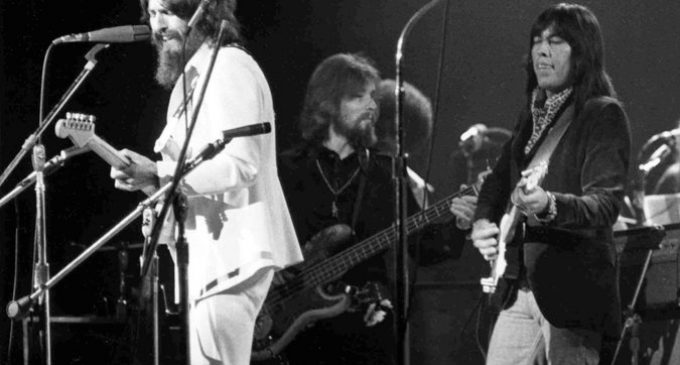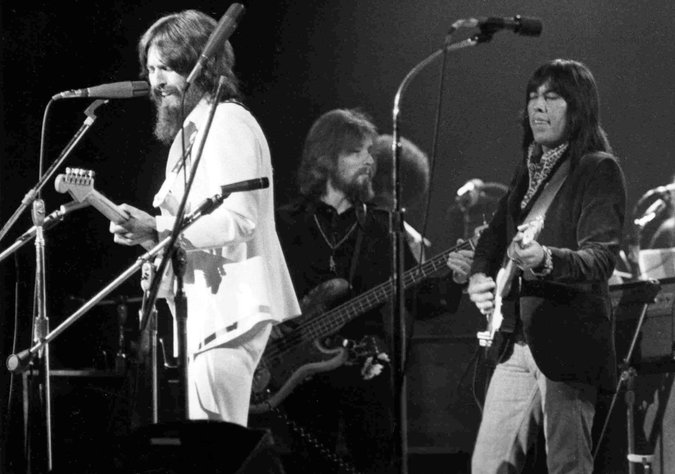An Encore for the Native Americans Who Shook Up Rock ’n’ Roll – The New York Times

Plenty of rock ’n’ roll songs have been banned from the airwaves because of their lyrics, but “Rumble” was the first to be banned because of its very sound. Recorded by Link Wray & His Ray Men in 1958, the instrumental pioneered the use of distortion, feedback and the power chord, a mix that made stations in New York and Boston so nervous they refused to play the song for fear that it might incite violence. According to popular lore, the hit song got its name because it reminded listeners of a gang fight, or at least a musical invitation to one; in “Pulp Fiction,” it’s the tune that plays while Uma Thurman and John Travolta share a $5 milkshake and a tense silence.
“If you considered yourself a real rock ’n’ roll guitar player, you had to learn ‘Rumble,’” Robbie Robertson, the songwriter and guitarist, said in an interview. “It was raw and dirty, and had that rebellious spirit to it.”
The single is at the heart of “Rumble: The Indians Who Rocked the World,” a documentary directed by the Canadian filmmakers Catherine Bainbridge and Alfonso Maiorana that has scooped up prizes on the festival circuit, including a Sundance special jury award for “masterful storytelling.” Reviewing the film for The Times, Ken Jaworowski likened it to the Oscar-winning “20 Feet From Stardom” and “Searching for Sugar Man.”
In theaters in the United States and Canada now, “Rumble” explores the history of Native Americans in popular music, some celebrated for their work, others less so. Jesse Ed Davis, who played alongside the Rolling Stones and, over time, every one of the Beatles, is here, as is Buffy Sainte-Marie, the protest singer who composed songs about everything from young love and spirituality to cultural genocide and the theft of Indian lands. Jimi Hendrix, whose paternal grandmother was one-quarter Cherokee, appears, resplendent in a white beaded jacket and moccasins, at Woodstock, as does the jazz singer Mildred Bailey, whom a young Bing Crosby credited with giving him his start.
And then there’s Wray, whose song and sound went on to inspire musicians from Pete Townshend and Neil Young to Iggy Pop and MC5. “It wasn’t till later on that I found out that Link Wray was an Indian,” of Shawnee heritage, said Mr. Robertson, who learned to play guitar on the Six Nations reserve in Ontario. “It just made the whole thing 10 times cooler to me.”
Source: An Encore for the Native Americans Who Shook Up Rock ’n’ Roll – The New York Times




There are no comments at the moment, do you want to add one?
Write a comment